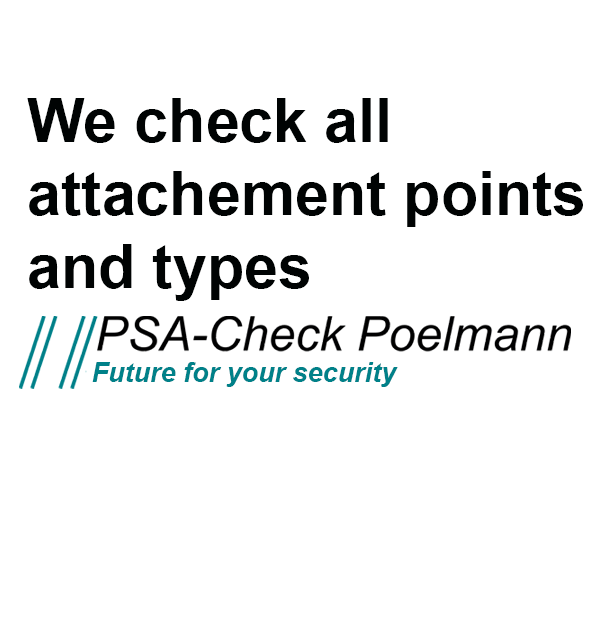Tests of anchors on roof surfaces are often viewed critically by companies and are made even more complicated by the lack of assembly documentation. It doesn't have to be!
Testing of anchors and anchor devices (AE) with and without installation documentation
A.Stop devices (AE) or anchors on roof surfaces
are to be checked annually.
There are many fundamental changes in the area of anchor devices (AE), anchors on roof surfaces! This leads to many open questions in the area of exams.
PSA-Check Poelmann carries out legally compliant tests in accordance with current regulations and rules. We create subsequent replacement documentation if the installation documentation is missing.
PSA-Check Poelmann carries out legally compliant tests in accordance with current regulations and rules. We create subsequent replacement documentation if the installation documentation is missing.
We examine
all
Attachment points, anchors and anchors on roof surfaces.
The most important change is, AE / securants no longer belong to "personal protective equipment against falls from a height". In addition, DIN EN 795 is no longer valid for permanently installed AE / anchors on roof surfaces.
We will be happy to provide you with all the information you need and advise you free of charge on tests without installation documentation.
We will be happy to provide you with all the information you need and advise you free of charge on tests without installation documentation.
Testing of anchors or attachment points on roof surfaces without an installation protocol or installation documentation.
Reinstall or test? Here you will find the right answers to your questions ... more about it
Reinstall or test? Here you will find the right answers to your questions ... more about it
Can tests also be carried out without installation documentation?
Yes!
Are load tests and tensile tests permitted? Yes! These should even be carried out at intervals of several years and defined in risk assessments!
Are load tests and tensile tests permitted? Yes! These should even be carried out at intervals of several years and defined in risk assessments!
Does the roof membrane have to be cut open to see the fastening?
Not mandatory!
Is replacement documentation possible if the installation documentation is missing?
Yes!
Get in touch with us and arrange a free consultation. Anchor devices (AE) / anchors can protect and save lives, do not neglect these mandatory safety devices! You are responsible!
Get in touch with us and arrange a free consultation. Anchor devices (AE) / anchors can protect and save lives, do not neglect these mandatory safety devices! You are responsible!
Contact us to have your anchorage points checked.
We would be happy to provide you with a free and non-binding offer.
PSA Check Poelmann
Tel.: +49 2309 60099-67
E-Mail: anfrage@psa-check.com
Which anchor devices according to DIN EN 795 are there?
What are anchor devices or securing agents?
According to DIN EN 795, a distinction is made between the following classes of anchor devices:
- Type A / A1: Anchor point for attachment to vertical, horizontal and inclined surfaces, e.g. walls, columns, lintels (see Fig. 1)
- Type A / A2: Anchor point for attachment to sloping roofs (see Fig. 2)
- Type B Transportable, temporarily attached anchorage devices (see Figure 3)
- Type C Anchor devices with a horizontal guide rope that deviate from the horizontal by a maximum of 15 ° (see Figure 4)
- Type D Anchor devices with horizontal guide rails (see Figure 5)
- Type E Anchor devices held by their own weight for use on horizontal surfaces (see Figure 6)
Anchor point typ A / A1
Anchor point for attachment to vertical, horizontal and inclined surfaces, e.g. walls, columns, lintels
(Picture 1)
Securants according to DGUV 201-056 / DIN 4426 / TRBS 2121 / ASR A2.1 (uV EN 795) on buildings and flat roofs
Securants according to DIN EN 795 Type A in wind turbines (WEA)
Our auditors have all the necessary certificates and experience in the wind energy sector and are familiar with a wide variety of systems and conditions. In addition, all examiners are offshore certified such as Helicopter Underwater Escape Training (HUET) and BOSIET (Basic Offshore Safety Induction and Emergency Training).
All certificates are kept up-to-date through extended training courses and seminars.














